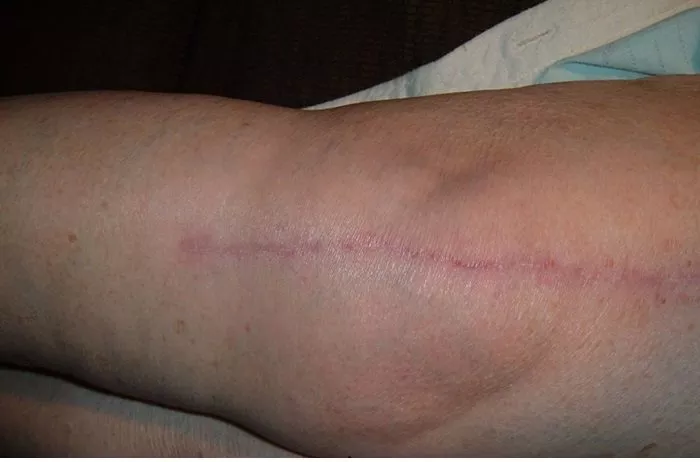Laser therapy is a widely acclaimed treatment method for reducing the appearance of scars. But how many sessions are generally required to achieve significant improvement? This question is pertinent for both patients and clinicians who aim to understand the limitations and potentials of laser treatment for scarring. In this article, we delve deep into various aspects of laser therapy, exploring its efficacy, the factors that influence treatment frequency, and what patients can realistically expect from multiple sessions.
Understanding Laser Scar Treatment
Before examining the frequency of treatments, it’s crucial to understand what laser scar treatment entails. Laser therapy uses focused light technology to either remove the outer layer of the skin or stimulate new skin cells to form. Depending on the type of laser used, it can target either the superficial layers or penetrate deeper into the dermis.
Types of Lasers Used
Ablative Lasers: These lasers vaporize the top layers of damaged skin at controlled levels of penetration. Common types include the carbon dioxide (CO2) and erbium lasers.
Non-ablative Lasers: These do not remove any skin layers; instead, they stimulate collagen production and cell renewal beneath the skin’s surface. Examples include fractional lasers and pulsed-dye lasers.
Each type of laser has specific indications based on the scar’s characteristics and the patient’s skin type.
Factors Affecting Laser Treatment Sessions
The number of laser treatments needed can vary significantly depending on several factors:
1. Type of Scar
Different scars respond differently to laser treatment. For example:
Atrophic Scars: These are characterized by pitted scars that occur when the skin does not regenerate tissue effectively, often seen with acne scars.
Hypertrophic Scars and Keloids: These are raised scars that occur due to an overproduction of collagen.
Contracture Scars: These occur typically after a burn, leading to skin tightening which can impair movement.
2. Age of the Scar
Older scars are generally more difficult to treat than newer ones. Fresh scars might respond better as they are still going through healing phases where they can be more easily influenced by interventions.
3. Skin Type
Skin type according to the Fitzpatrick scale (which classifies skins according to their reaction to sun exposure) can also affect the treatment plan. Darker skin types are at a higher risk of pigmentation issues following laser treatment.
4. Severity and Size of the Scar
Larger and more severe scars might require more sessions compared to smaller, less noticeable ones.
Expected Number of Treatments
It’s essential to set realistic expectations when considering laser treatment for scars. Most practitioners agree that while some improvement can be seen after the first session, multiple treatments are typically necessary.
General Guidelines
Mild Scars: 3-5 sessions
Moderate Scars: 5-7 sessions
Severe Scars: Up to 10 or more sessions
Spacing Between Sessions
Sessions are usually spaced 4-6 weeks apart. This interval allows the skin to heal and regenerate new tissue.
Patient Case Studies
To provide a clearer picture, examining a few case studies can be helpful:
Case Study 1: Treatment of Acne Scars
Background: A 25-year-old patient with a history of cystic acne resulting in significant atrophic scarring.
Treatment: Fractional non-ablative laser
Outcome: After 6 sessions, the patient observed a 50% improvement in the appearance of scars.
Case Study 2: Treatment of Surgical Scars
Background: A 40-year-old patient with hypertrophic surgical scars post-appendectomy.
Treatment: Combination of pulsed-dye laser and fractional ablative laser
Outcome: After 8 sessions, the scar was less raised and the redness had diminished significantly.
Safety and Risks
While laser therapy is generally safe, it’s not devoid of risks, which may include:
1. Redness, Swelling, and Itching: Common immediately post-treatment.
2. Pigmentation Changes: Either hyperpigmentation or hypopigmentation, especially in darker skin types.
3. Scarring and Infection: Rare but serious complications.
Aftercare and Maintenance
Post-treatment care is crucial and includes:
1. Avoiding Sun Exposure: To prevent pigmentation changes.
2. Proper Wound Care: Keeping the area clean and moisturized.
3. Follow-up Treatments: Maintenance sessions may be required every few years to keep the scar minimized.
Conclusion
Laser treatment is a promising option for scar management, with the number of necessary sessions varying widely based on the scar’s characteristics and patient factors. Achieving optimal results typically requires patience, adherence to post-treatment care, and realistic expectations regarding the outcomes. Collaborative planning between the patient and dermatologist can yield the best tailored approach for effective scar treatment.
[inline_related_posts title=”You Might Be Interested In” title_align=”left” style=”list” number=”6″ align=”none” ids=”7900,7808,7848″ by=”categories” orderby=”rand” order=”DESC” hide_thumb=”no” thumb_right=”no” views=”no” date=”yes” grid_columns=”2″ post_type=”” tax=””]
































